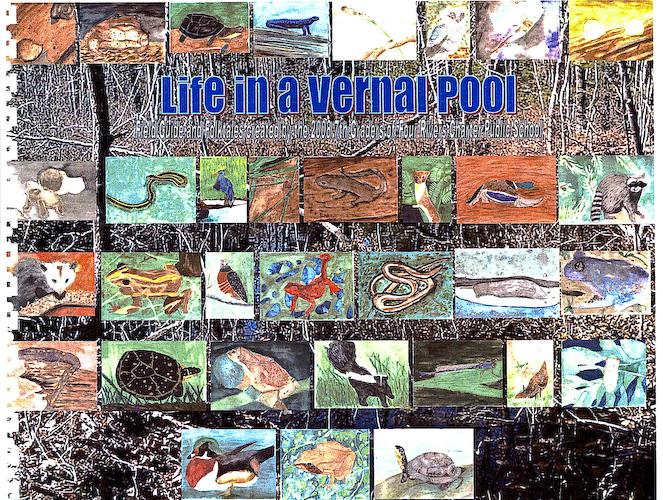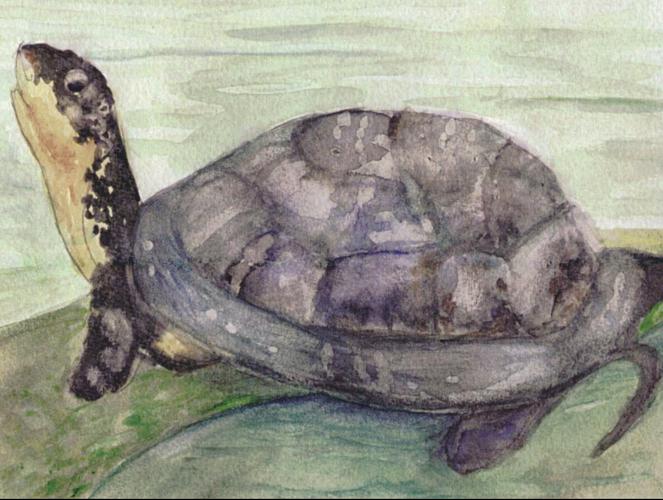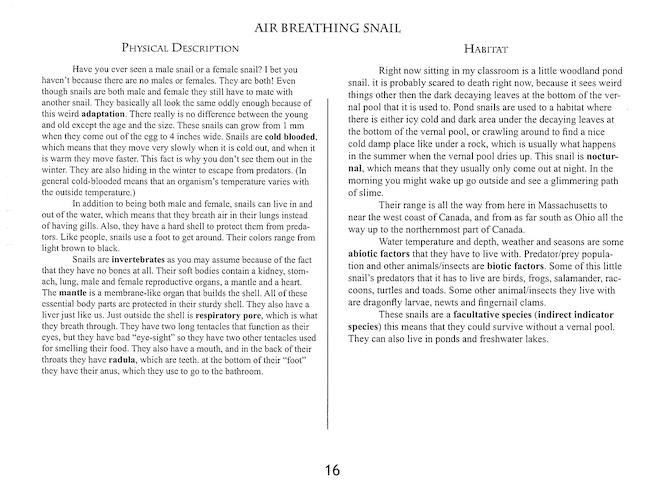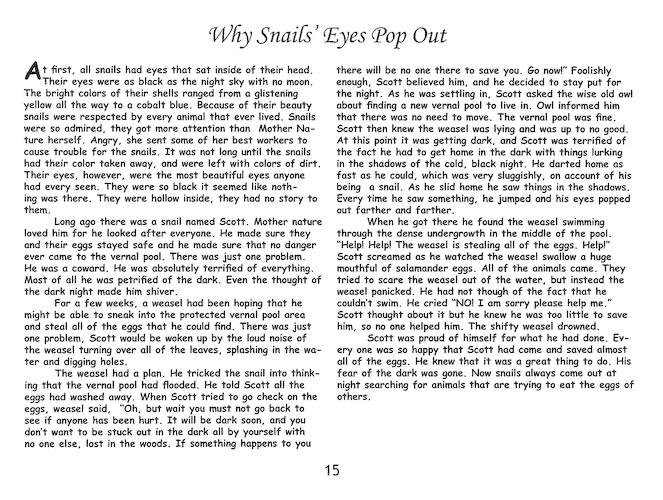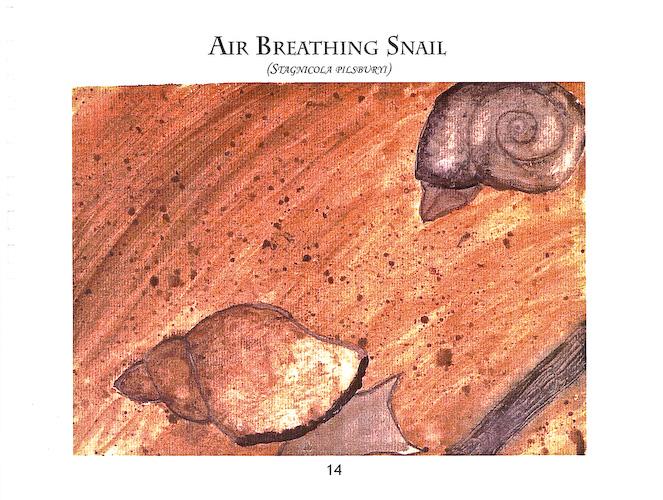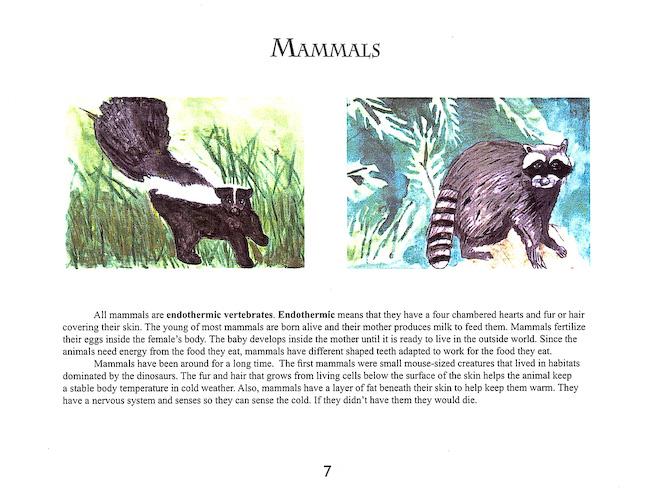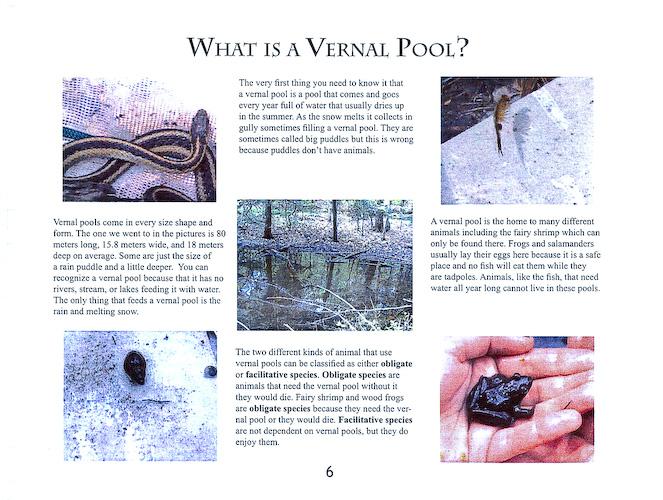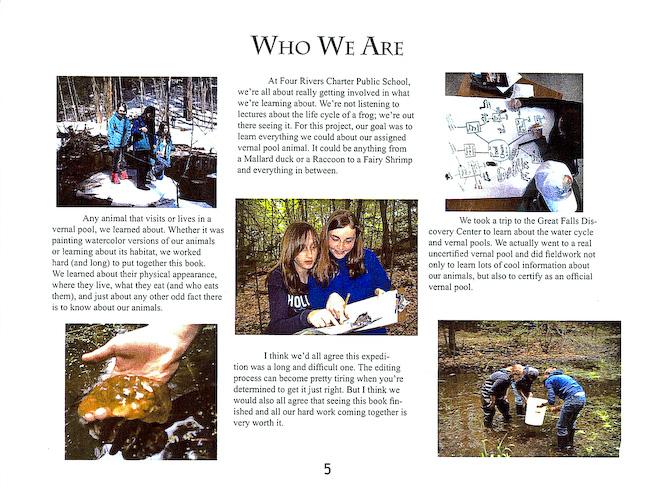Life in a Vernal Pool Field Guide
School: Four Rivers Charter Public School
City/State: Greenfield, MA
Grade(s): 7
Format(s): Field guide: Natural science
Subject(s): Science and Technology
Project Overview
Seventh grade students at Four Rivers Charter Public School in Greenfield, Massachusetts created this field guide as part of an expedition on Vernal Pools.
The Life in a Vernal Pool learning expedition brought students outside of the school to conduct intensive scientific research at a local vernal pool. This vernal pool served as a case study for addressing state standards on ecology and taxonomy and included extensive skill building in species identification, nonfiction reading, scientific writing, and measurement. The students’ first major project was an application to the state of Massachusetts for official vernal pool certification. Further book research and instruction in watercolor technique and expository and creative writing gave students the tools they needed to complete the second major project of the expedition – the Life in a Vernal Pool field guide. Designed for young children, the field guide includes paintings, descriptions, and original folktales about animals that live in and around vernal pools. Sections for each animal include: description, habitat, diet, natural history, taxonomy, and life cycle. The book was donated to the local public library. Thanks to these seventh graders’ thorough research and advocacy, they achieved real change in their community.
The certification process required students to describe the location and distinctive features of the pool in detail, and to measure and map the pool throughout a season. They identified and documented vernal pool species, observed their lifecycles and reproductive activities, and classified them as obligate or facultative vernal pool organisms. Students coordinated as a group to avoid counting the same organism twice as they worked to identify the egg masses, larvae, and juveniles of several amphibian species. They used scoop nets to look for fairy shrimp, aquatic insect larvae and nymphs, leeches, fingernail clams, and snails. Each find was documented with dates, counts, and photographs.
How This Project Can Be Useful
- Models authentic scientific research for a real purpose
- Models student leadership and contribution to community
- Certification achieved for the vernal pool is an inspiring success story
- Models repeated fieldwork research trips to a site for authentic purpose
- Models integration of disciplines: science; math and data analysis; expository and creative writing; illustration, composition and layout
- Unusual incorporation of fictional writing – original folktales – into a scientific product
Relevant Resources
Common Core State Standards
| Standard | Long Term Learning Target |
|---|---|
| W.7.2 |
|
| W.7.3 |
|
| W.7.4 |
|
| W.7.5 |
|
| W.7.9 |
|
| L.7.1 |
|
| L.7.3 |
|
| L.7.6 |
|
| WHST.6-8.2 |
|
| WHST.6-8.4 |
|
| WHST.6-8.5 |
|
| WHST.6-8.9 |
|
